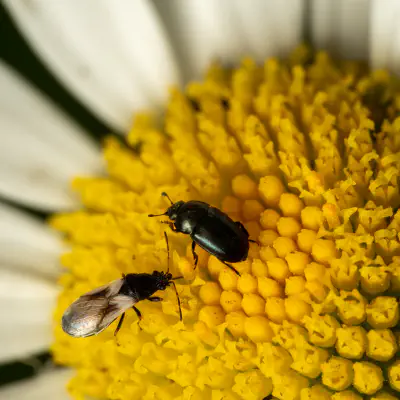The common flowerbug is found across Europe and the Palearctic to China. It is common in Great Britain and Ireland. In the Alps it is found to about 2000 meters above sea level.
Common Flowerbug (lat. Anthocoris nemorum)





This is not intended to be a dry lexicon. Personal stories and sensitive articles form the framework for our pictures: „Night at the farmhouse“
The human world is exciting and Hugo's curiosity is simply too great, so every night he sets off on an adventure and risks everything.


